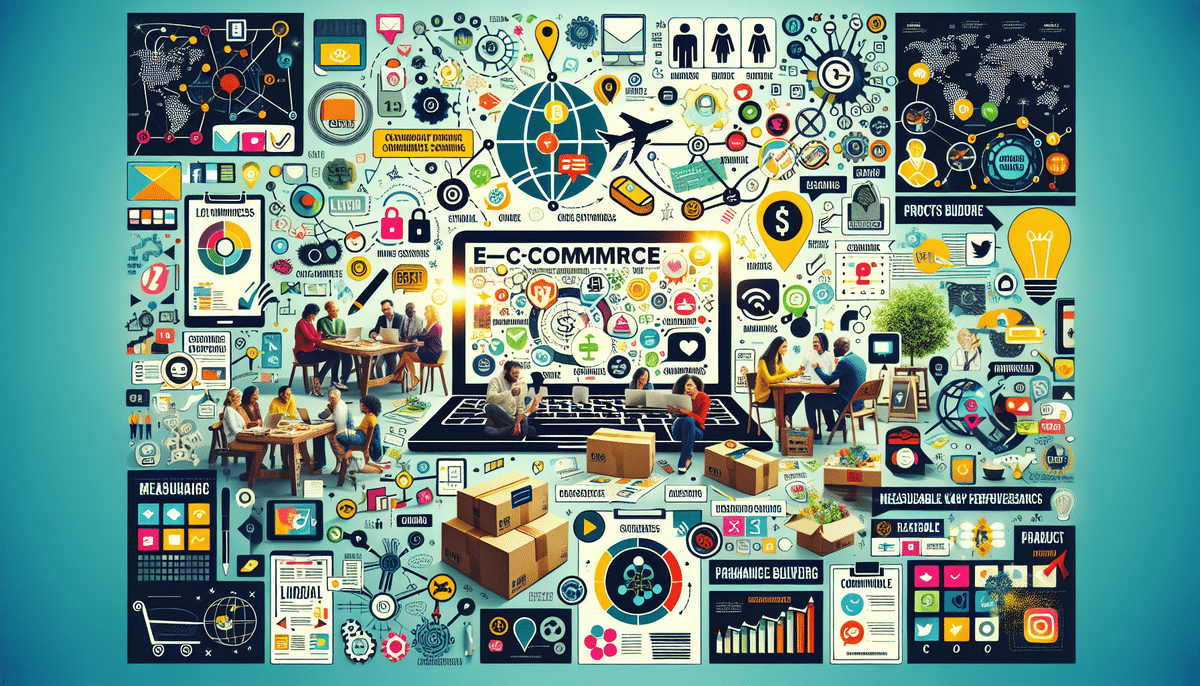Creating and Managing Loyalty Programs: A Comprehensive Guide
Loyalty programs have become an increasingly popular way for businesses to reward and retain their customers. Not only do they provide incentives for customer loyalty, but they also promote brand awareness and help to increase revenue. In this comprehensive guide, we will explore the ins and outs of creating and managing loyalty programs, from the benefits of implementing one to the future trends we can expect to see in this field.
The Benefits of Implementing a Loyalty Program
Implementing a loyalty program can provide a variety of benefits for your business. For one, it can help you to increase customer retention rates. According to research by Bain & Company, increasing customer retention by 5% can boost profits by 25% to 95%. By offering rewards and incentives to customers who continue to do business with you, you can encourage them to stay loyal to your brand. Additionally, loyalty programs can help you attract new customers by setting you apart from your competitors and providing an extra incentive for people to choose your business.
Another benefit of implementing a loyalty program is that it can help you gather valuable customer data. By tracking customer purchases and preferences, you can gain insights into what your customers like and what they don't. This information can then be used to improve your products or services and tailor your marketing efforts to better meet your customers' needs. For instance, Forbes highlights how leveraging customer data can significantly enhance loyalty program effectiveness.
Finally, loyalty programs can also help to increase customer engagement and satisfaction. By offering personalized rewards and incentives, you can make your customers feel valued and appreciated. This can lead to increased customer satisfaction and a stronger emotional connection to your brand, which can ultimately lead to increased sales and revenue.
Types of Loyalty Programs: Which One is Right for Your Business?
When creating a loyalty program, there are a variety of different types to choose from. Some common examples include:
- Points Programs: Customers earn points for each purchase, which can later be redeemed for rewards. This type is great for encouraging frequent purchases.
- Tiered Programs: These programs offer different levels of membership, each with its own set of rewards. Tiered programs work well for creating a sense of status and exclusivity.
- Cashback Programs: Customers receive a percentage of their purchase amount back as cash or store credit. This straightforward reward appeals to a wide audience.
The right type of program for your business will depend on your specific goals and the needs of your customers. It's important to consider factors like your budget, target audience, and the types of rewards you want to offer when choosing a loyalty program type.
Another type of loyalty program that has gained popularity in recent years is the Subscription-Based Program. This type of program offers customers exclusive access to products or services for a recurring fee. Subscription-based programs work well for businesses that offer products or services that customers use regularly, such as beauty products or streaming services. By offering exclusive access and discounts to subscribers, businesses can create a loyal customer base that continues to make regular purchases. However, it's important to ensure that the subscription fee is reasonable and that the rewards offered are valuable enough to keep customers engaged.
Understanding Customer Behavior: The Key to Successful Loyalty Programs
One of the most important factors in creating a successful loyalty program is understanding your customers. What motivates them to continue doing business with you, and what types of rewards are most appealing? By studying customer behavior and preferences, you can create a loyalty program that is tailored to their needs and interests. Factors like demographic information, past purchase history, and feedback can all be useful in creating a program that resonates with your target audience.
Another important aspect to consider when designing a loyalty program is the level of engagement it offers. Customers are more likely to remain loyal to a brand if they feel a sense of community and connection. This can be achieved through interactive features like forums, social media groups, and exclusive events. According to a Harvard Business Review article, fostering community engagement can significantly enhance customer loyalty.
Finally, it's important to regularly evaluate and update your loyalty program to ensure it remains relevant and effective. Customer preferences and behaviors can change over time, so staying up-to-date with industry trends and adjusting your program accordingly is essential. By regularly soliciting feedback and analyzing program data, you can make informed decisions about how to improve and evolve your loyalty program to better meet your customers' needs.
How to Set Up a Loyalty Program: Step-by-Step Guide
Setting up a loyalty program takes careful planning and attention to detail. Here’s a step-by-step guide to help you get started:
- Define Your Program Objectives: Determine what you want to achieve with your loyalty program, such as increasing customer retention, boosting sales, or gathering customer data.
- Choose the Type of Program: Select the loyalty program type that best aligns with your objectives and customer preferences, whether it’s a points-based, tiered, cashback, or subscription-based program.
- Develop a Reward Structure: Decide how customers will earn rewards and what those rewards will be. Ensure that the rewards are attractive and attainable.
- Implement Tracking Systems: Develop a system for tracking customer activity and managing reward distribution. This could involve integrating with your existing CRM or POS systems.
- Market Your Program: Promote your loyalty program to your target audience through various channels such as email, social media, and in-store promotions.
One important aspect to consider when setting up a loyalty program is the cost. You'll need to determine how much you can afford to spend on rewards and how much revenue you expect to generate from the program. Additionally, regularly evaluating the program's effectiveness and making adjustments as needed can help ensure it continues to meet your business goals.
Another key factor is the technology needed to support your loyalty program. This may include a customer database, point-of-sale system integration, and a mobile app or website for customers to track their rewards. Choosing technology that is user-friendly and reliable, and that can be easily integrated with your existing systems, is crucial for smooth operation.
Best Practices for Developing Effective Loyalty Program Strategies
When developing loyalty program strategies, keep the following best practices in mind:
- Relevance of Rewards: Ensure your rewards are aligned with your target audience's interests and purchasing habits. Irrelevant rewards are unlikely to motivate participation.
- Clear Guidelines: Establish straightforward rules for earning and redeeming rewards to avoid customer frustration or confusion.
- Personalization: Tailor rewards and communication to individual customer preferences to enhance engagement and satisfaction.
- Simplicity: Design a program that is easy to understand and use, minimizing barriers to participation.
- Regular Review and Refinement: Continuously assess the performance of your loyalty program and make necessary adjustments to maintain its effectiveness and appeal.
Adhering to these best practices can help ensure that your loyalty program is both engaging for customers and beneficial for your business.
Measuring the Success of Your Loyalty Program: Metrics and KPIs to Track
To determine the success of your loyalty program, it's important to measure key performance indicators (KPIs) and track customer behavior. Some essential metrics to track include:
- Customer Lifetime Value (CLV): The total revenue a business can expect from a single customer account throughout the business relationship.
- Purchase Frequency: How often customers make purchases over a specific period.
- Customer Churn Rate: The rate at which customers stop doing business with you.
- Redemption Rates: The percentage of rewards that are actually redeemed by customers.
- Net Promoter Score (NPS): A measure of customer satisfaction and loyalty based on the likelihood of customers recommending your business to others.
Additionally, tracking the impact of your loyalty program on these metrics can help you refine and improve your program over time. Evaluating how your loyalty program contributes to your business goals can also help you justify the investment and plan for future enhancements. Tools like Tableau or Power BI can be effective for data visualization and analysis of these KPIs.
Common Mistakes to Avoid When Implementing a Loyalty Program
While loyalty programs can be highly effective, there are some common mistakes that businesses make when creating and managing these programs:
- Lack of Consistency: Failing to provide a consistent customer experience across all touchpoints can lead to confusion and frustration, undermining the effectiveness of the program.
- Overcomplicating the Program: Offering rewards or incentives that are too difficult or time-consuming to redeem can discourage participation. Simplicity is key to maintaining engagement.
- Ignoring Customer Feedback: Not listening to customer feedback can result in a program that doesn’t meet the needs or preferences of your target audience.
- Poor Communication: Ineffective communication about the program’s benefits and how to participate can lead to low enrollment and engagement rates.
- Inadequate Reward Value: If the rewards offered are not perceived as valuable by customers, they may lack the motivation to engage with the program.
By being aware of these common pitfalls and taking steps to avoid them, you can design and implement a loyalty program that effectively drives customer engagement and loyalty.
Maximizing Customer Engagement Through Personalization
Personalization is becoming increasingly important in all aspects of marketing, and loyalty programs are no exception. By using data to personalize rewards and incentives, you can create a more engaging and compelling experience for your customers. Some effective ways to personalize your loyalty program include:
- Birthday Rewards: Offering special rewards or discounts on customers' birthdays can make them feel valued.
- Customized Recommendations: Suggest products or services based on a customer’s past purchases or browsing behavior.
- Targeted Promotions: Provide promotions that align with individual customer preferences and shopping habits.
These personalized touches can make customers feel valued and more connected to your brand, fostering stronger loyalty over time. According to a Deloitte study, personalized experiences can significantly enhance customer satisfaction and loyalty.
Using Data Analytics to Improve Your Loyalty Program
Data analytics is a powerful tool for improving the effectiveness of your loyalty program. By tracking and analyzing customer activity, you can identify areas for improvement and refine your program over time. For example:
- Customer Feedback Analysis: Analyze customer feedback and reviews to identify pain points in the user experience or areas where rewards don't align with customer preferences.
- Behavioral Analytics: Use data to understand how customers interact with your program, which rewards are most popular, and where customers may be dropping off.
- Predictive Analytics: Predict future customer behavior based on historical data to proactively adjust your loyalty strategies.
This feedback can be used to refine your program and make it more engaging and effective over time. Utilizing tools like Google Analytics and SAS Analytics can aid in comprehensive data analysis.
Creating an Incentive Program for Employee Buy-In
Employee buy-in is essential for a successful loyalty program. Here are some strategies to engage your employees:
- Offer Incentives: Provide bonuses or incentives for employees who actively promote and implement the loyalty program.
- Involve Employees in Planning: Involving employees in the development and planning process can foster a sense of ownership and enthusiasm for the program.
- Regular Communication: Share program updates and success stories with employees to maintain their engagement and enthusiasm over time.
When employees are fully committed and understand the benefits of the loyalty program, they are more likely to advocate for it and enhance its effectiveness.
How to Communicate and Market Your Loyalty Program to Customers
Effective communication and marketing are key to the success of any loyalty program. Here are some effective strategies:
- Clear Value Proposition: Clearly communicate the value of the program and the types of rewards offered to encourage participation.
- Multi-Channel Promotion: Promote your loyalty program through various channels such as email campaigns, social media, and in-store signage.
- Regular Updates: Keep customers engaged by regularly communicating program updates, new rewards, and exclusive offers.
- Engaging Content: Use engaging content and visuals to highlight the benefits of joining the loyalty program.
Utilizing platforms like Mailchimp for email campaigns or Hootsuite for social media management can help streamline your marketing efforts.
Integrating Technology for Seamless Customer Experience
Technology can play a key role in creating a seamless and engaging loyalty program experience for customers. Here are some ways to integrate technology effectively:
- Point-of-Sale Integration: Integrate your loyalty program with your point-of-sale systems to automatically track and reward customer purchases.
- Mobile Apps or Online Portals: Offer a mobile app or online portal where customers can easily track their rewards, view available offers, and manage their accounts.
- Gamification: Incorporate gamification elements like badges, leaderboards, or challenges to make the loyalty program more fun and engaging for customers.
By leveraging technology, you can enhance the user experience, making it easier for customers to engage with your loyalty program and stay connected with your brand. Solutions such as LoyaltyLion or Shopify Plus offer robust platforms for managing loyalty programs effectively.
Future Trends in Loyalty Programs: What to Expect in the Coming Years
The loyalty program landscape is constantly evolving, and several trends are expected to shape its future:
- Increased Personalization: Enhanced data analytics will enable more personalized rewards and experiences, tailoring the loyalty program to individual customer preferences.
- Coalition Loyalty Programs: These programs allow customers to earn and redeem rewards across a variety of businesses and brands, increasing the flexibility and value of the rewards.
- Blockchain and AI Integration: Emerging technologies like blockchain can provide secure and transparent reward tracking, while artificial intelligence can optimize program strategies and customer interactions.
- Omnichannel Experiences: Seamless integration across multiple channels (online, in-store, mobile) will be crucial for providing a consistent and engaging customer experience.
Staying ahead of these trends can help your business innovate and maintain a competitive edge in offering attractive and effective loyalty programs. For example, McKinsey & Company discusses how data-driven personalization and technology integration are transforming loyalty programs.
Conclusion
Creating and managing a successful loyalty program requires careful planning, attention to detail, and a deep understanding of your customers. By implementing a program that is tailored to your target audience and carefully tracking and evaluating its success, you can foster loyal customers and boost your bottom line. Keep in mind the best practices outlined in this guide, and stay on top of emerging trends to ensure your program remains relevant and effective in the coming years.




















